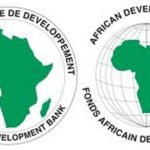
This article provides insight into how countries are accelerating progress towards the global Sustainable Development Goal on education (SDG 4). It highlights specific examples of countries’ actions to transform their education systems, based on the findings of the Transforming education towards SDG 4: Report of a global survey on country actions to transform education’, published ahead of the 2024 Global Education Meeting. This event is organized back-to-back with the G20 Education Ministers Meeting in Brazil, emphasizing common priorities of the Brazilian G20 Presidency and UNESCO, such as inclusion, equity and education financing.
The report highlights seven ways that are important for countries to transform their education systems.

1. Explore multiple paths to transforming education
The survey report underscores the necessity of a multifaceted, context-specific approach to transforming education. It is essential to recognize that countries are in different places in their education transformation journeys and are taking various approaches to support what is needed most in their unique contexts.
Transformative action encompasses gradual or small-scale improvements and larger systemic changes that better align with the evolving learning needs within a new social contract. Transforming education needs to be contextualized within each country’s unique realities. Not only do countries have different priority areas but they also have different economic and socio-cultural conditions that factor into decision making.
Three examples of how countries have contextualized their approaches to transform education within their political, economic and socio-cultural environments:
2. Secure consistent funding to education
Financing must be prioritized and sustained, and innovative measures must be adopted to accelerate transformation. Without sufficient funding, the quality of education can decline, adversely impacting the future of countless learners.
Countries must increase investments in education from all sources, including international aid and innovative financing, to meet their SDG 4 targets while ensuring efficient and effective use of resources. Achieving effective education financing requires cutting inefficiencies, enhancing governance, and linking investments to education outcomes, focusing on maximizing impact and accountability.
Three examples of education financing to ensure equitable resource distribution, transparency, and sustainability:
3. Prioritize inclusion, equity and gender equality in education
Inclusion, equity and gender equality are at the heart of SDG 4. In the face of challenges, countries are guided by these principles as they transform their education systems.
All countries have reported actions towards inclusion, equity and gender equality in education. Still, significant challenges remain, particularly for refugee and displaced children and youth, who are at high risk of educational exclusion. Achieving inclusion requires targeted strategies and systemic transformation to ensure all learners have equal access to quality education, essential for meeting the 2030 Sustainable Development Goals.
Three examples of how countries are taking action toward inclusion, equity, and gender equality in education:
4. Embrace digital transformation to drive educational changes
Digital transformation is essential to transforming education, with countries focusing on enhancing connectivity, digital resources and educator training. While many countries have committed to expanding internet access and integrating digital tools to promote equity and inclusion, there remains a need to address the quality of digital content and ensure that digital platforms are both accessible and secure. The effort is guided by principles of inclusion, equity, quality, and accessibility, emphasizing the need to prevent digital transformation from exacerbating existing inequalities in access to technology.
Three examples of how digital transformation is being utilized to impact and enhance education systems:
5. Invest in teachers to transform education
Investing in the teaching profession is crucial for transforming education. This investment includes enhancing professional development, equipping teachers with new pedagogical skills, digital tools, and updated curricula.
As the backbone of educational transformation, teachers need systemic support to address the global shortage and meet evolving educational demands. Improving working conditions, fostering professional autonomy and ensuring adequate training are essential to making the teaching profession more attractive and sustainable, with many countries already taking transformative actions in these areas.
Three examples of countries’ efforts to prioritize investments in the teaching profession:
6. Adopt a holistic, lifelong approach to transform education and support individual and societal well-being
Transforming education requires a comprehensive and integrated approach that reimagines curricula, teaching methods, and lifelong learning opportunities. Central to this transformation is the renewal of educational practices to cultivate diverse knowledge through interdisciplinary and intercultural perspectives. This includes embedding environmental sustainability and socio-emotional skills into the curriculum, preparing learners to meet future challenges as resilient, well-rounded individuals.
The transformation also emphasizes the integration of digital tools to support personalized learning, innovative pedagogical strategies, and the development of critical thinking, creativity, and problem-solving skills. By fostering an environment that nurtures autonomous and lifelong learning, education can effectively bridge the gap between traditional methods and the evolving needs of the future.
Three examples of how countries are adopting holistic and lifelong approaches to transforming education:
7. Engage stakeholders, especially youth and students, to transform education meaningfully.
Many countries increasingly recognize the importance of embedding youth engagement within their governance frameworks, ensuring that policies and decision-making processes include the voices of those directly impacted by transforming education.
Genuine and meaningful youth engagement is inclusive, rights-based, and accountable. It creates spaces for youth and students to access transparent information and opportunities to express their views, receive the necessary support to succeed and actively participate in decision-making. By fostering a sense of ownership among those impacted by education, these approaches ensure that educational change is more likely to be embraced by those they affect the most.
Three examples of how countries are engaging youth in decision-making:
The global survey on country actions to transform education is not just about showcasing good practices and transformative actions. It’s about encouraging collaboration among countries and joint actions. Sharing and learning from each other’s successes and challenges propel countries toward achieving SDG 4 by 2030.
Source: UNESCO



















